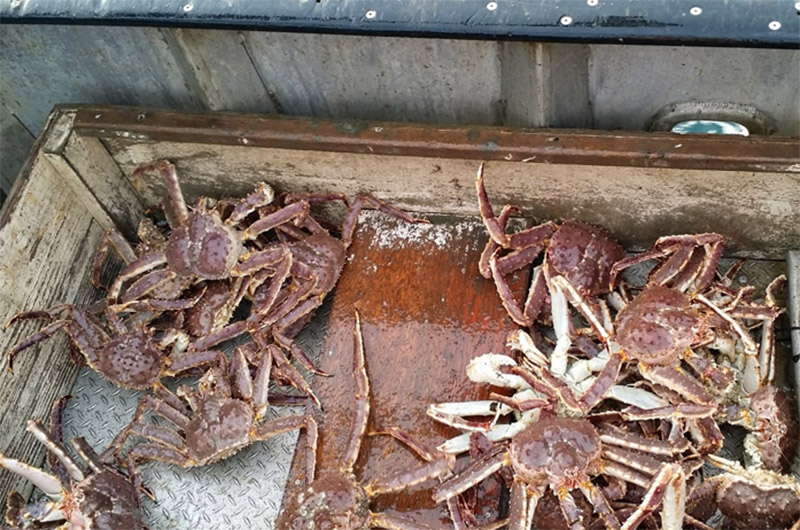Bering Sea crabbers have gotten a first glimpse at how their upcoming fisheries may — or may not — play out.
Crab managers and stakeholders met in Seattle last week to review results of the summer trawl surveys for snow crab, bairdi Tanners and red king crab at Bristol Bay. Overall, the slow growing stocks appear to be declining, but there were several encouraging signs.
For snow crab, Alaska’s largest crab fishery, the abundance of mature males, the only crabs allowed to be retained for sale, was at its lowest on record. The number of young male snow crab recruits, however, was the highest since 1995. The numbers of mature and young female snow crabs also showed big increases.
Industry watchers say chances look hopeful that there will be a snow crab fishery, similar to or smaller than last season’s 21.5 million pound catch.
For bairdi Tanners, snow crab’s bigger cousin, the number of mature males dropped in both eastern and western fishing districts. The number of female crabs increased significantly, and young male Tanners also appear to be on an upswing.
The Tanner crab fishery was called off last year, following a 20 million pound catch the previous season. An opener this fall is still anyone’s guess.
Likewise, a red king crab fishery at Bristol Bay is also an unknown. The fishery produced 7.6 million pounds last year.
The summer survey showed the number of adult males at the lowest point in five years. Young male crabs, however, showed a 10 percent hike and the number of young females doubled, boding well for the future.
Crabbers have their fingers crossed they will get to drop pots in all three fisheries, said Tyson Fick, executive director of the trade group Alaska Bering Sea Crabbers.
“You have to look at these across multiple years,” Fick said. “Hopefully, the trends we’ve seen in this year’s survey will continue and that will allow for a little bump up in harvests.”







